
table of contents
- Dahlia classes at a glance
- Grade 1 - 5
- Grade 6-10
- Grade 11-15
- 30 old varieties from A - Z
- Varieties from A - K
- Varieties from L - Z
Dahlias have been a real feast for the eyes in Central European gardens for around 200 years and are one of the most popular ornamental plants because of their variety. Every year, numerous new varieties are presented, which define a wide range of colors and really fit into every garden project. The Dahlia are divided into special classes that define the shape of the flower and show clear differences.
Single-flowered dahlias, for example, look completely different from the pompom variants. This is what makes dahlias so attractive, because their variety means they can be integrated into a wide variety of projects. Planting dahlias can even become a real passion for many people Today there are many collectors who try different varieties every year and thus theirs Find favorites.
Dahlia classes at a glance
However, the dahlias on offer are varieties that all come from the same species:
Dahlia hortensis. The garden hydrangea is the classic par excellence, although this taxa is a cross of the following three species:- Scarlet dahlia (bot. Dahlia coccinea)
- Large-feathered dahlia (bot. Dahlia pinnata)
- Dahlia scapigera: rarely used, integrated into the cross at a later date
The large feathered and scarlet dahlias are the origin of today's garden dahlias and were introduced at the end of the 18th century. Century crossed. Since that time, the variety of Dahlia hortensis has expanded to over 20,000 and the breeders do not give up in this regard and present more creations every year. These are divided into 15 classes that define certain properties of the varieties:
- Shape of the petals
- filled or simple
- certain vegetative characteristics
However, properties such as winter hardiness or the necessary maintenance effort hardly differ within the classes. As such, these really only describe how the flowers are shaped and whether there are special vegetative characteristics that differ from class to class. You can also use the characteristics to define which class it is, for example if you walk past a garden and see a dahlia that you do not know. The following is an overview of the individual classes:
Grade 1 - 5
1. Single-flowered dahlias
This class describes dahlias that only have a single ring of petals, which is usually flat. As a result, the tubular flowers are clearly visible and easily accessible to pollinator insects, especially bees and bumblebees. Usually there are eight petals.

2. Anemone-flowered dahlias
These Dahlia are easy to recognize by their numerous tubular flowers in the center, which protrude far from the flower. Each variety has a different number of leaf rings, the leaves of which lie flat against each other and are close together.
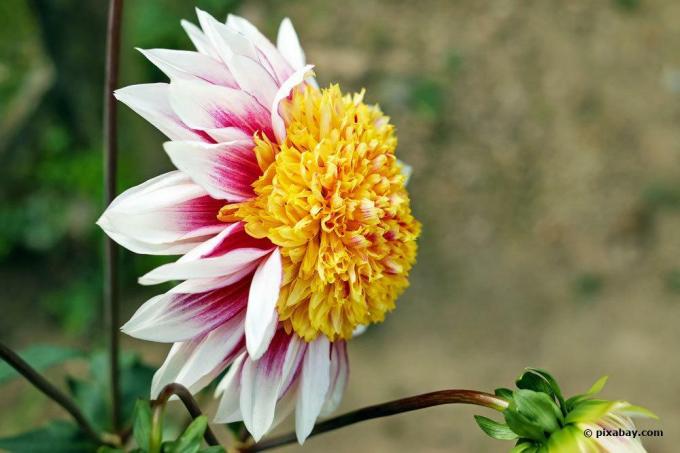
3. Frill dahlias
As the name suggests, the flower shape of this class is reminiscent of a ruff, because it has two rings on petals. The outer ring is simple and connects to the inner petal ring, which is curled upwards. This gives these hedge dahlias the frill look.
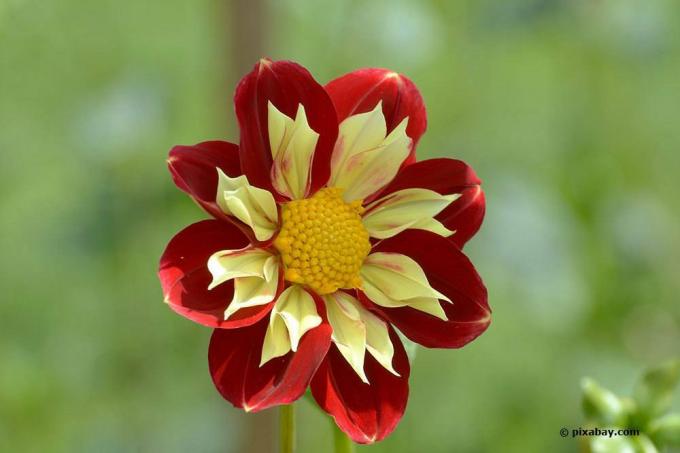
4. Water lily dahlias
What is striking about the water lily dahlias is their dense double flower, which especially enchants walkers with its multitude of petals. In them, the tubular flowers in the center can only be seen as soon as they are completely open.

5. Decorative dahlias
Decorative dahlias are a class that combines all varieties that do not fit into another. But they have one thing in common: The flowers are extremely densely filled and the center is never visible. In return, the varieties can differ greatly in terms of their actual shape. The petals have a blunt tip and are often flattened.
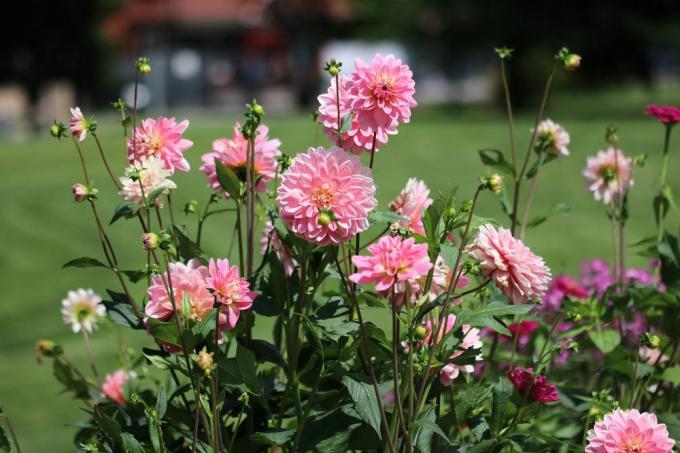
Grade 6-10
6. Ball dahlias
As the name suggests, these dahlias resemble a small ball due to their dense abundance and rounded and rolled leaves. The flowers, which are only seven to ten centimeters in diameter, are among the smallest of the species.
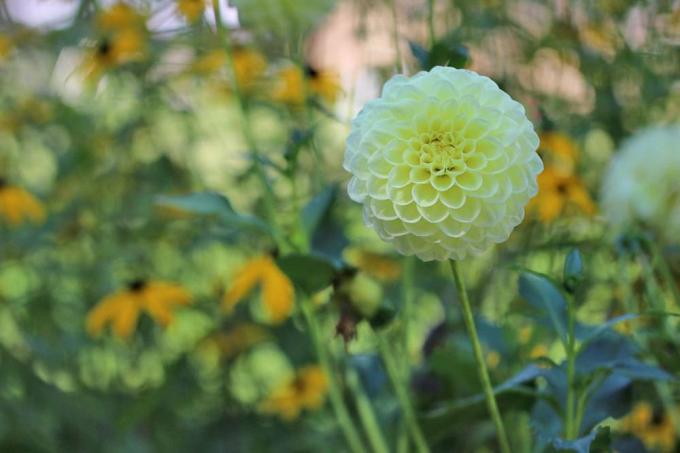
7. Pompom dahlias
The pompom dahlias are even smaller, five to six centimeters in diameter. The reason for the small size is their spherical shape with the completely rolled up leaves.

8. Cactus dahlias
The cactus dahlia is a class whose leaves narrow to a point at the end and resemble cactus needles. It is filled and the individual leaves curl up halfway. Cactus dahlias are among the varieties that grow the tallest. The record is held by the 'Kalinka' variety, which can easily reach 300 centimeters.

9. Semicactus dahlias
Very similar to the cactus dahlias, only the petals are significantly wider and the flowers are appealingly large with a diameter of up to 20 centimeters.

10. Various dahlias
The diverse dahlias are the class in which all varieties are listed that, due to their properties, cannot be classified in other classes. This includes, for example, 'Fascination', which at first glance reminds you of a single flower, but then looks completely different.

Grade 11-15
11. Deer antler dahlias
In the past, these double dahlias belonged to the divers, but are now grouped in class 11 due to their frayed or split petals.
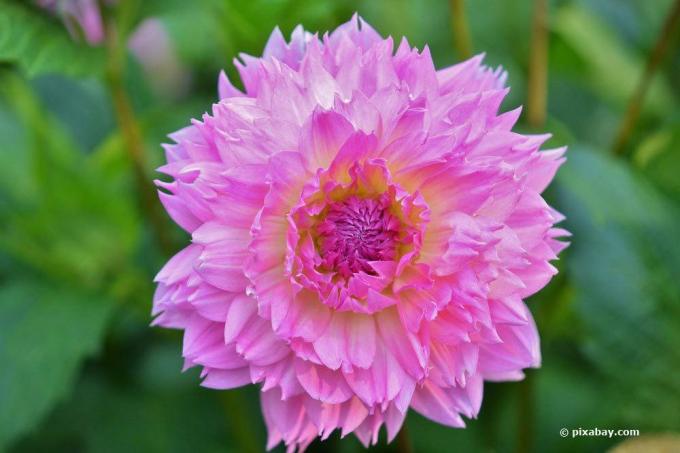
12. Orchid-flowered dahlias (simple)
The orchid flowers are single-flowered and have completely rolled-up petals. These are narrow and pointed, which is why they are also known as star dahlias.
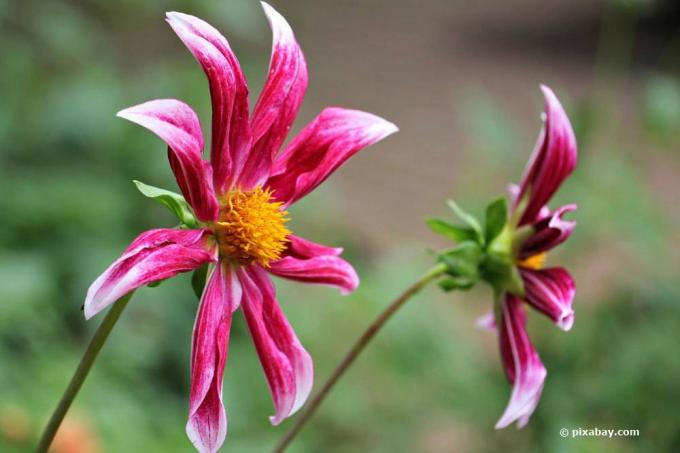
13. Orchid-flowered dahlias (double)
Dahlias in this class are similar in shape to class 11, but have significantly wider petals that are only slightly curled up at the tips. It also has more petals, which makes it look fuller
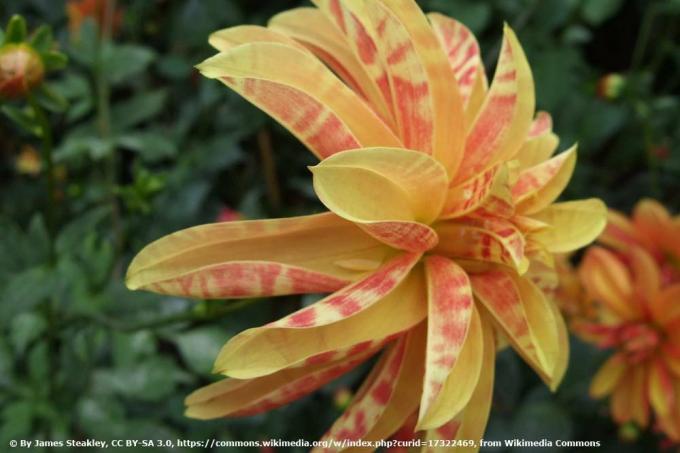
14. Peony dahlias
This class has the peculiarity that the two or more rings with petals are arranged differently from variety to variety. The center is flat and easily visible, which makes it attractive to pollinator insects.
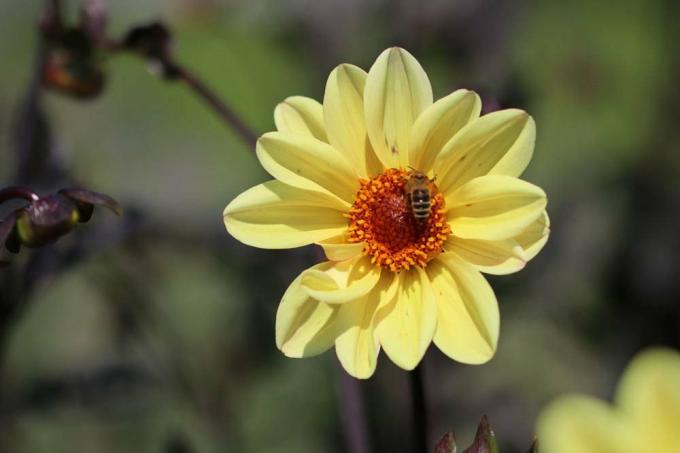
15. Stellar dahlias
Stellar dahlias are reminiscent of ball dahlias, only the petals are bent back and slightly rolled up. At first glance, they look like they're permanently in the wind.

With some dahlia growers or providers, the 14th and 15. Class not listed or merged under the class of Diverse Dahlias. For this reason, you should find out from such dealers exactly whether the desired variety from these classes is available or not. Don't be surprised: the class numbers are fixed. That said, if you're looking for a grade 9 dahlia, this is a semi-cactus variety.
tip: Dahlias were already used as an ornamental plant by the Aztecs. They have cultivated these extensively and used their tubers as a source of food, which was also the case in the European Middle Ages.
30 old varieties from A - Z
It is pointless to draw up a clear list of the dahlia varieties, since the daisy family is one of the most popular ornamental plants of breeders. In Germany, the old varieties of the Asteroideae taxa are particularly popular with gardeners, of which the following 30 are the classic to represent:
Varieties from A - K
albino
- Pompondahlia
- In 1949 this variety was bred with the purest flower white

Alster greeting
- Frill dahlia
- Variety with a yellow ruff and orange leaves

Andrea
- simple dahlia
- bred in Holland
- has been inspiring since 1968 due to the yellow flowers and the high degree of robustness

Arabian Night
- Decorative dahlia
- bred in 1951 in Holland
- the flowers are colored intensely red-black and look attractive in the vase

Asahi Chohji
- Anemone-flowered dahlia
- one of the most popular types of buckets from 1962
- the flowers are striped in red and white

Bishop of Llandaff
- Peony dahlia
- bright red represents one of the most famous varieties from 1928
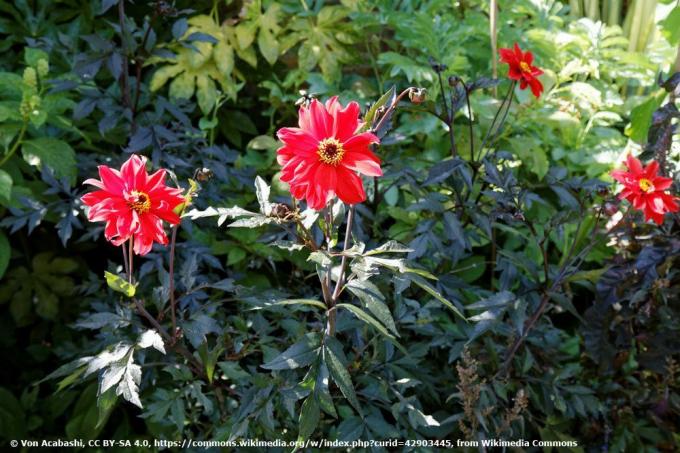
Cheerio
- Cactus dahlia
- Classic from 1949 in carmine red
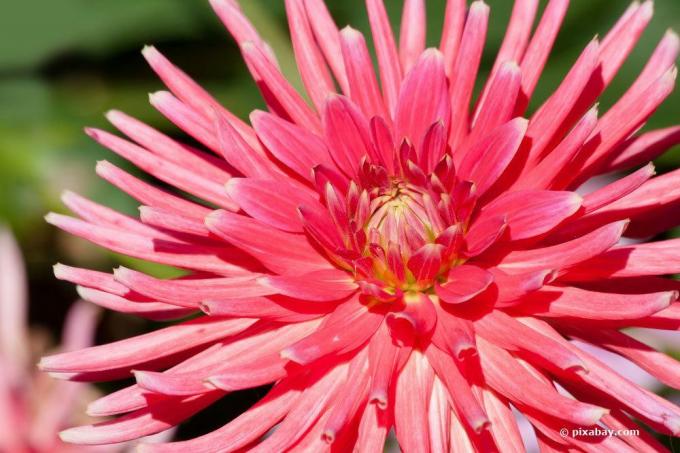
C. R. Jelitto
- Deer antler dahlia
- salmon pink
- bred in 1958 by Ernst Severin
- received an award for it in the same year
Edinburgh
- Decorative dahlia
- the flowers in purple and white leaf tips have been enchanting since 1950
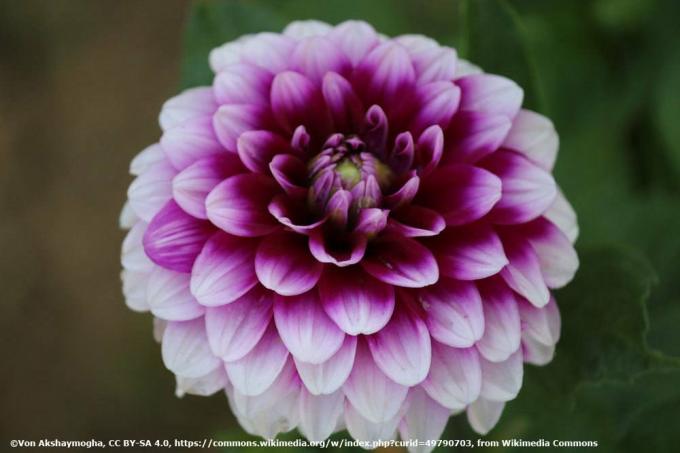
Firebird
- Simple dahlia
- intense red with a yellow center

giraffe
- from 1940
- striped in orange and yellow, hence the name

Golden Scepter
- this pompom dahlia shines in golden yellow
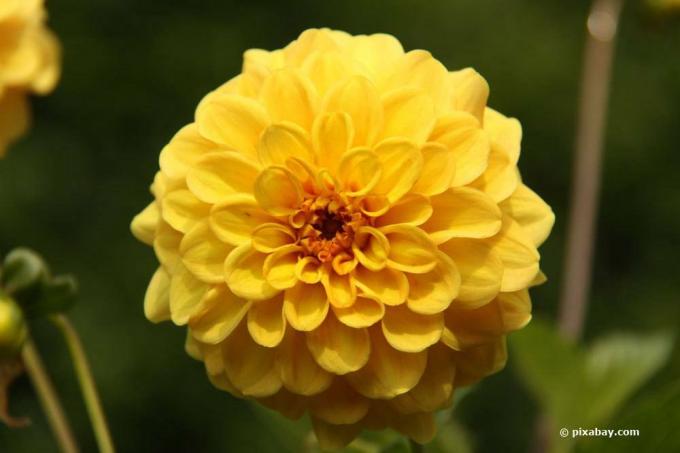
Gretchen Heine
- Decorative dahlia
- intense pink flowers
- a German breed from 1935
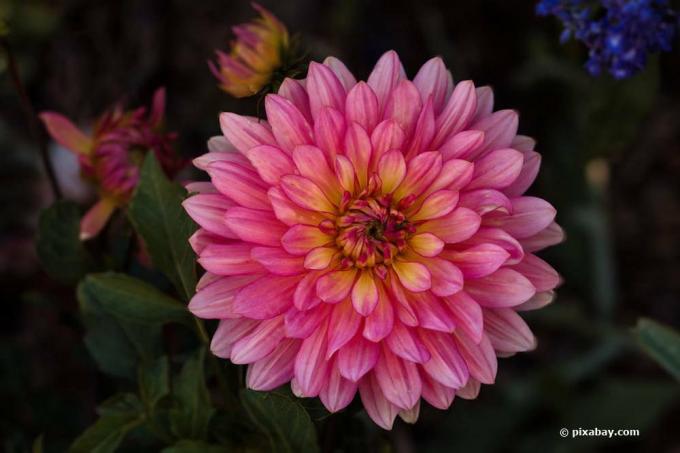
Holland Festival
- orange and white variety from 1960

Kaiser Willhelm
- oldest German variety with yellow flowers from 1881 in honor of Kaiser Wilhelm II.
Varieties from L - Z
Le Castel
- a white classic from 1971, one of the most beautiful water lily dahlias from France
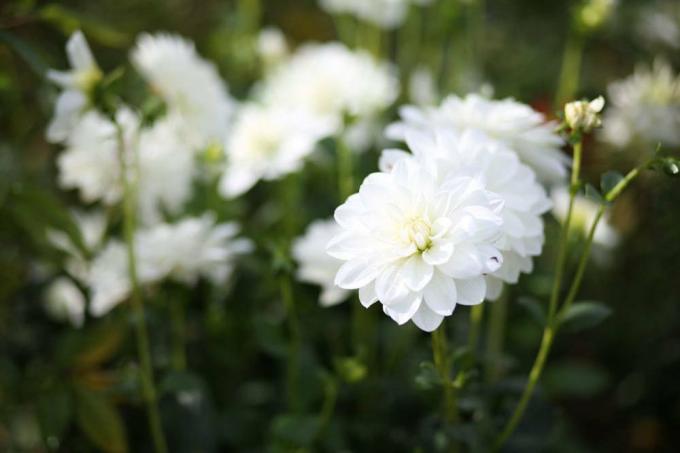
Lilac Time
- The flowers of one of the most famous dahlias from 1939 shine blue-violet
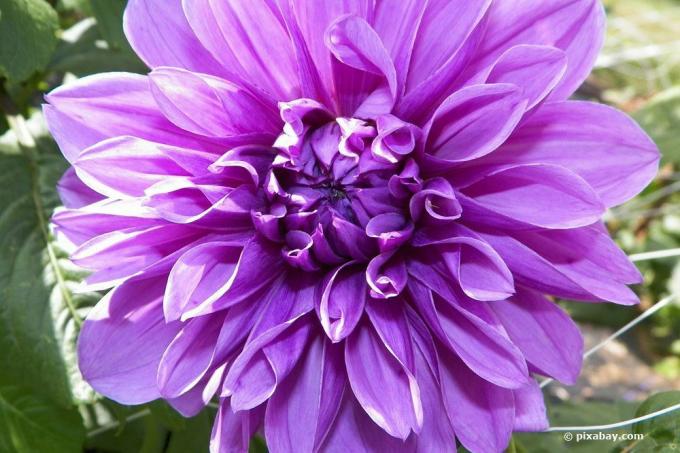
Marie Schnugg
- American variety from 1971 with red star-shaped flowers
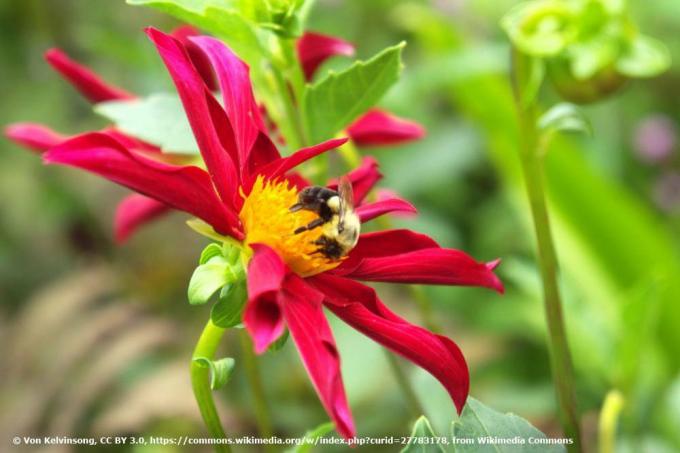
Marville
- bred in France in 1954
- intense yellow up to the flower tubes
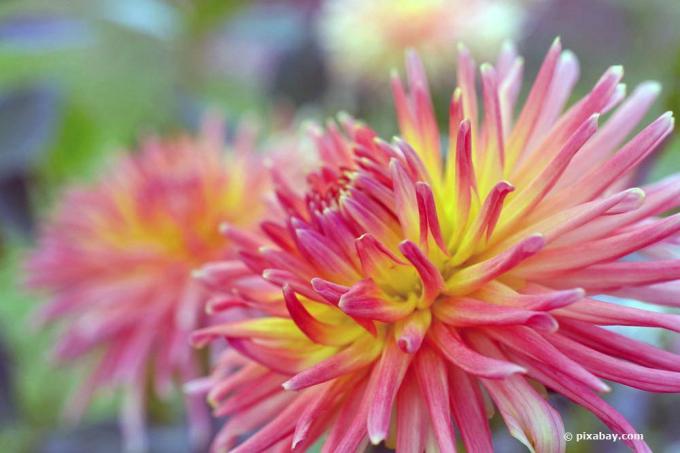
Nonet
- bred in 1951 by Truffaut and George
- unique flower color
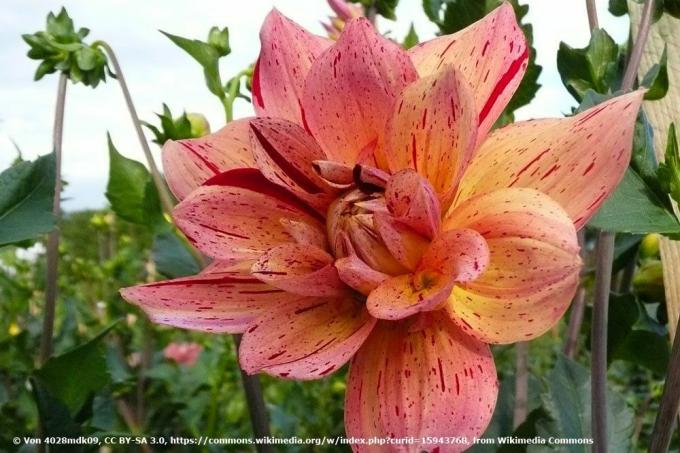
Olympic Fire
- Bred in 1936, the occasion was the 1936 Olympic Games in Berlin
- scarlet
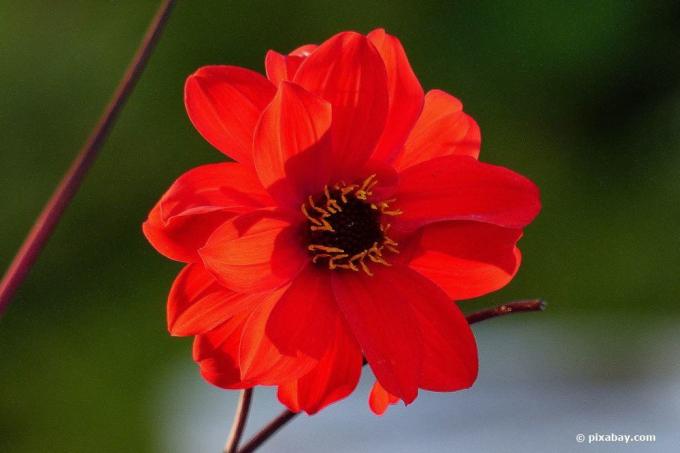
Rancho
- very decorative
- Color is a picturesque orange
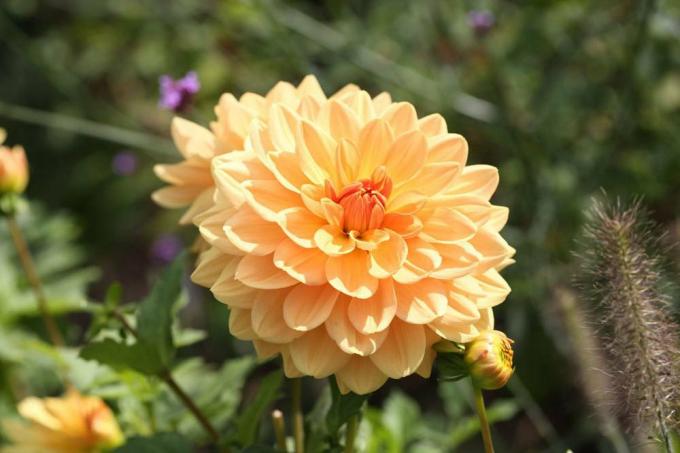
Sicilia
- orange flowers
- Breeding from 1962 with truly gigantic flowers of up to 20 centimeters in diameter
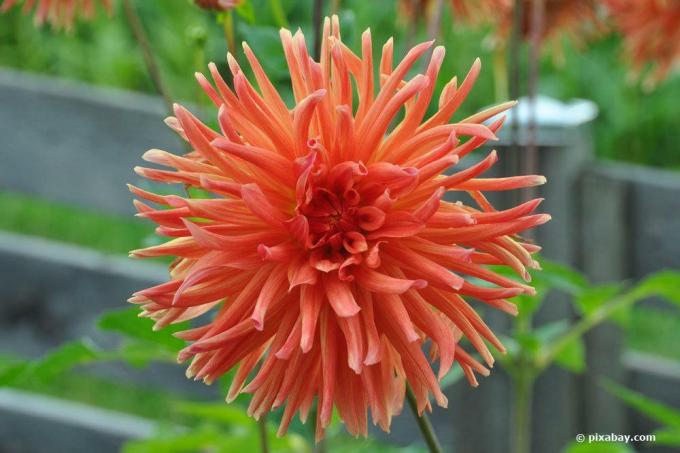
Sneezy
- Bred in 1941 by the Dutchman Groen
- white flower, lovely and graceful
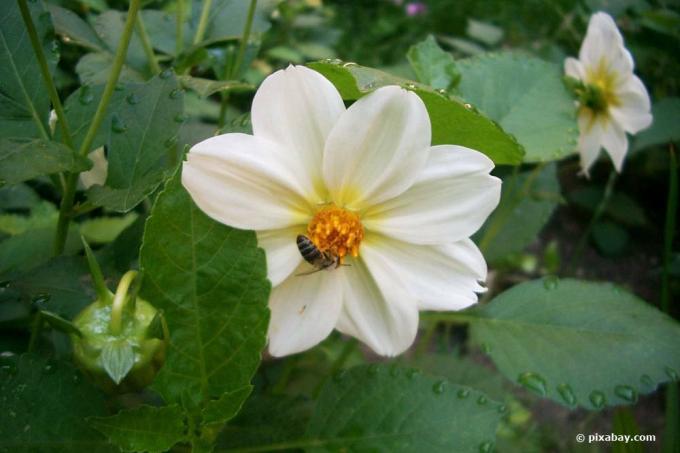
Pride of Berlin
- a popular variety in parks
- bred in 1884 and as well known as 'Kaiser Willhelm'
- pink flowers
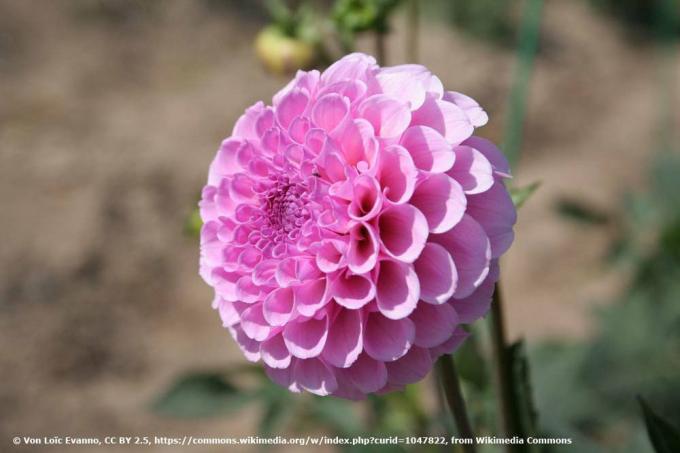
Tartan
- American breed
- has been inspiring since 1950 with the petals in rich dark purple and white tips

Tsuki Yori No Shisha
- Japanese deer antler breed from 1953 in white
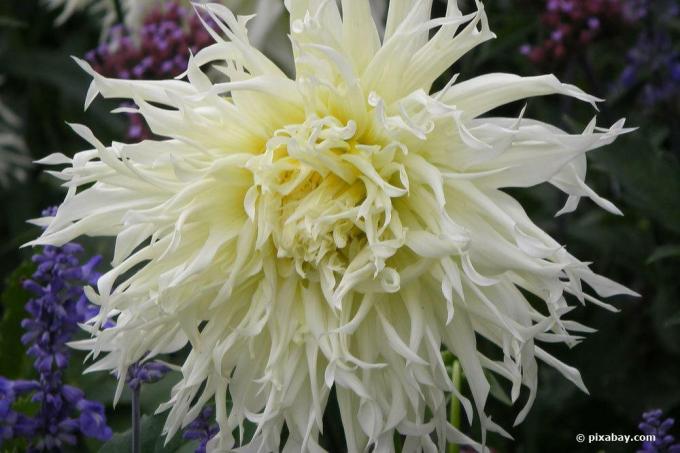
People's Chancellor
- ideal for cottage gardens
- bred in 1934
- is very popular with bees, butterflies and bumblebees
White aster
- this variety can reach a height of almost two meters
- grown in 1900 with white flowers

York & Lancaster
- Oldest variety in the world
- bred around 1850
- red and white color
- running into each other

tip. If you decide on one of the large-flowered varieties, you should definitely rely on a support when keeping it so that the picturesque plants do not bend over and perish miserably. Bamboo sticks, trellises or fences, which the daisy family can hold on to, are particularly suitable for this.

